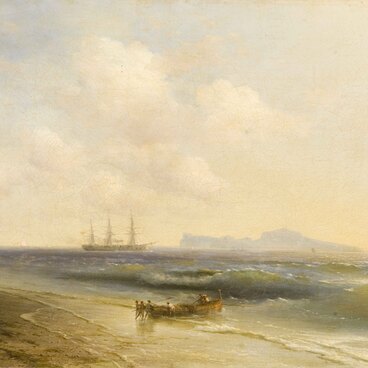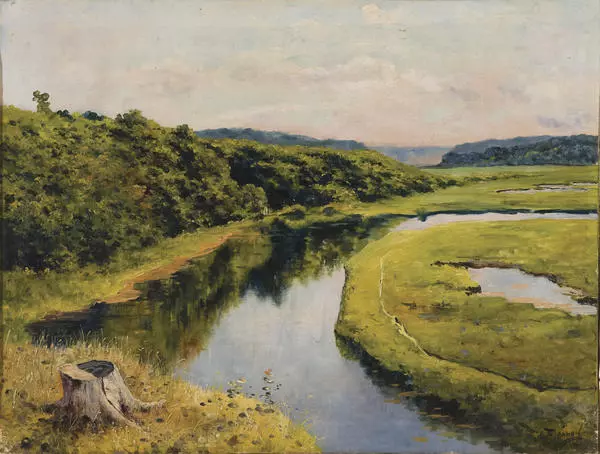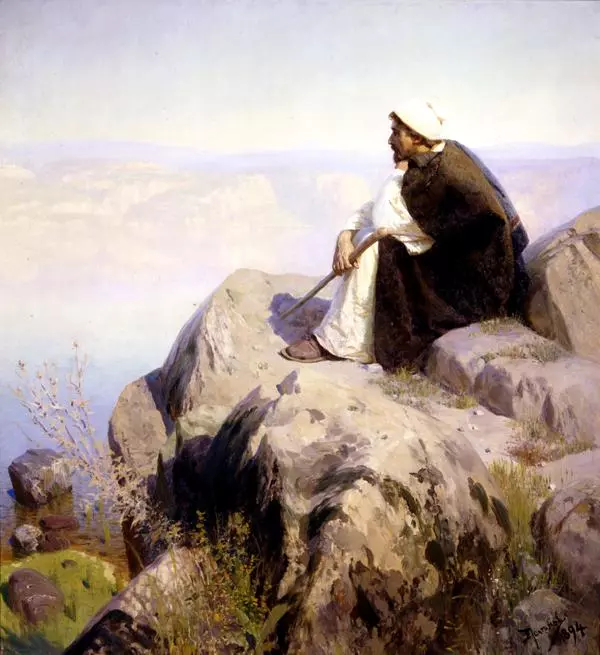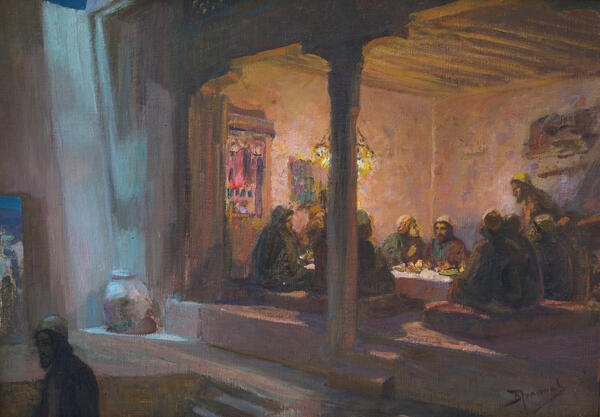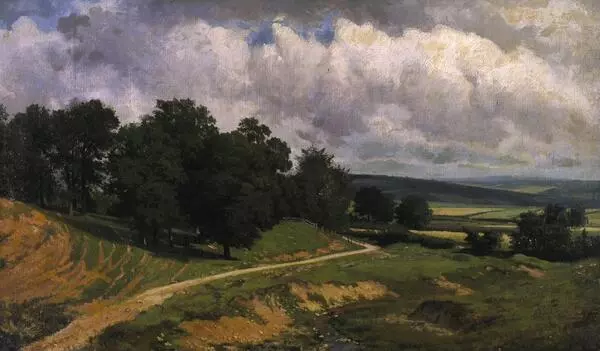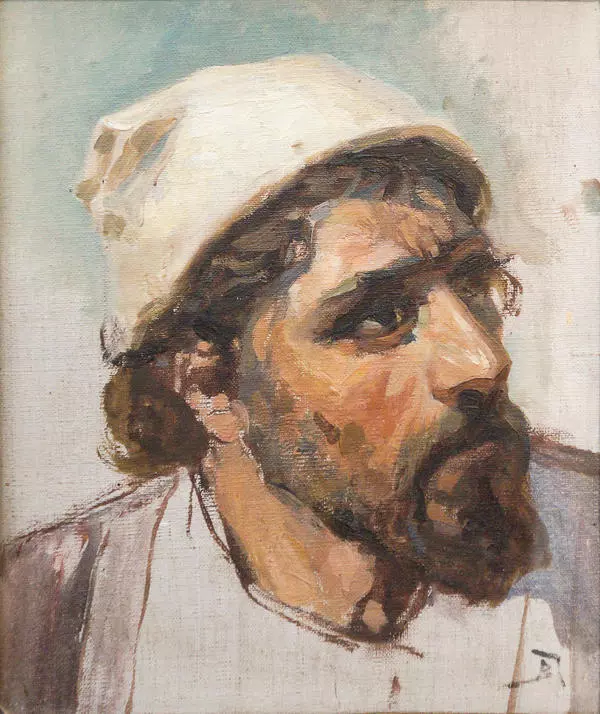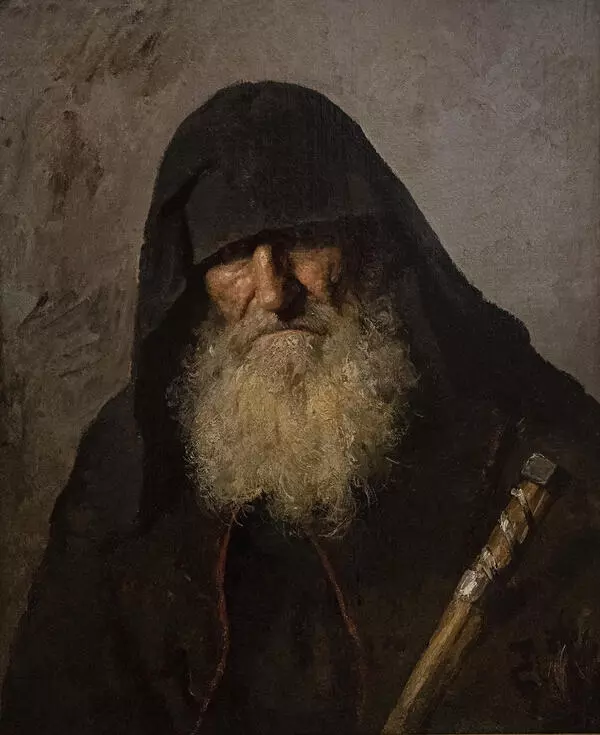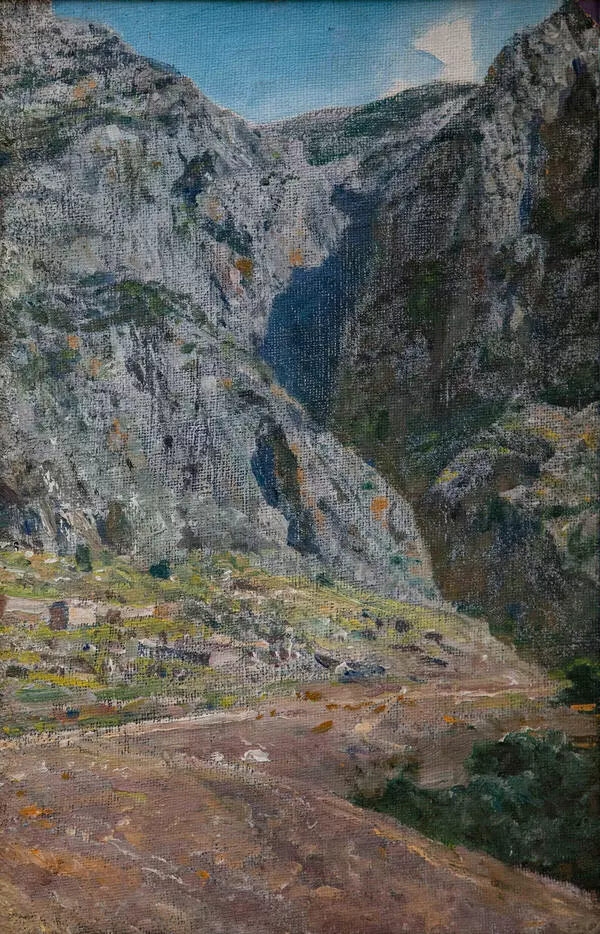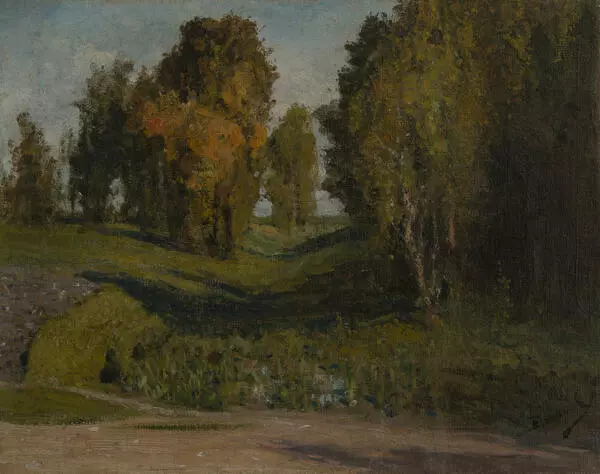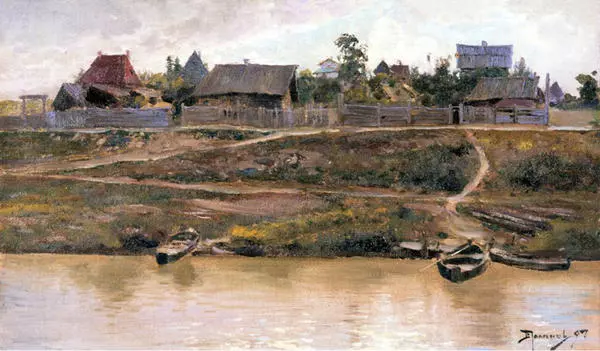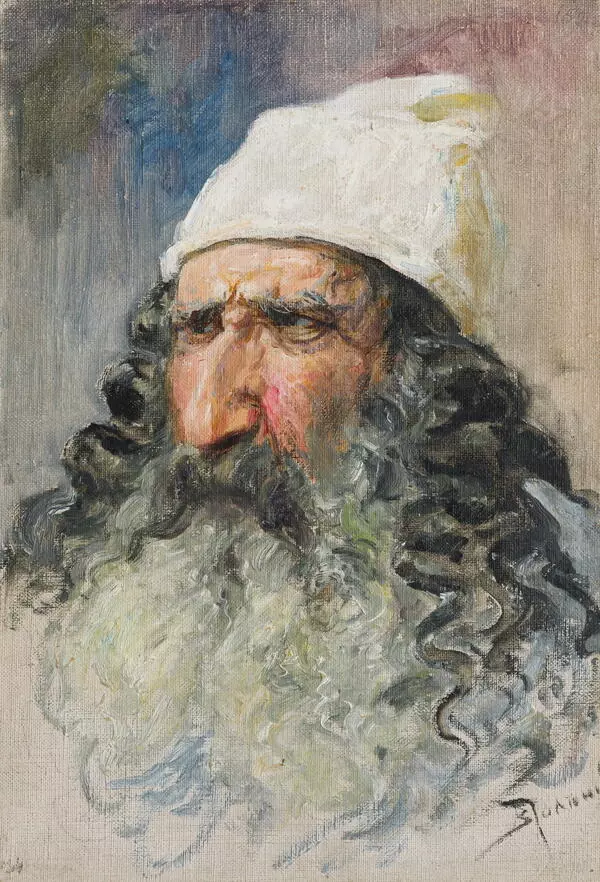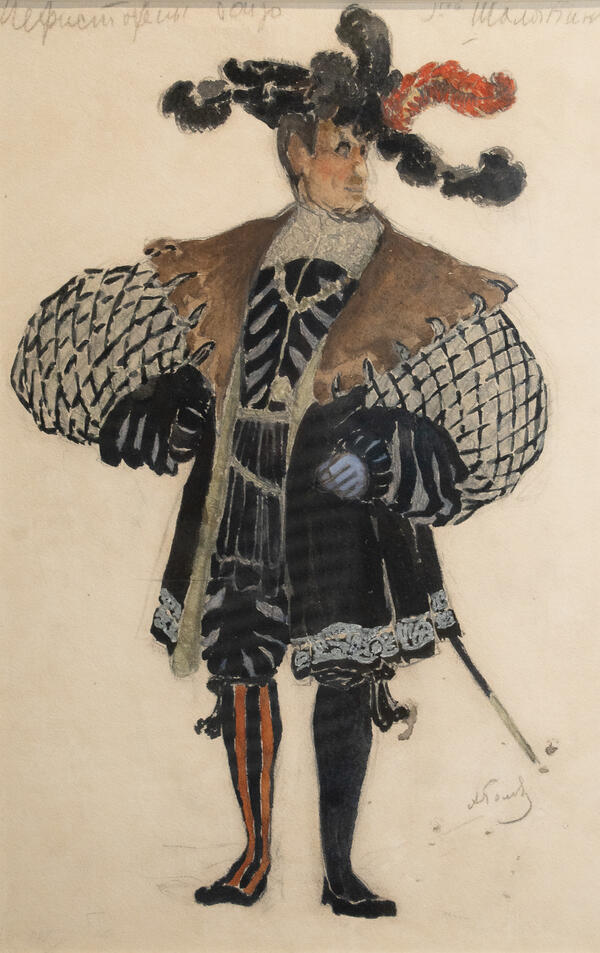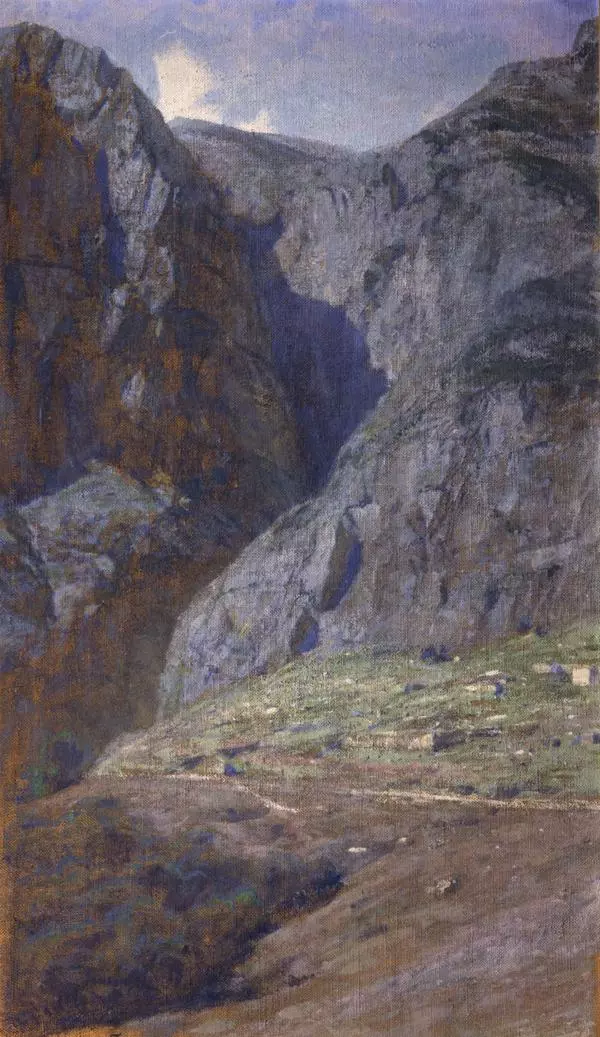The painting ‘Christ and the Sinner’ marked the beginning of the evangelical cycle in the work of Vasily Polenov (1844-1927) and was conceived by the artist back in the 1860s, but was embodied only in 1887. For such a long time, several versions of the canvas and numerous studies for it were created. One of them is a sketch of the head of a young Jew from the collection of the Tarusa Art Gallery. It was probably made in 1881-1882, during the artist’s first trip to the Middle East. A year later, realizing that he lacked image material of more people, Polenov went to Italy, where he drew images of Italian Jews.
The canvas is literally saturated with many different types of people, and each image is portrait. By far the most expressive and elaborate was the image of humane and forgiving Christ.
From the memoirs of the artist Konstantin Korovin about his teacher Polenov: “I am starting a big painting, ” he told me, “Christ and the Sinner”. I have to ask you if in your free time, you will pose for me a little, half an hour. I’ll paint a little from you. I need it’. Posed for the figure of Jesus also the second favorite Polenov’s student Isaac Levitan. In the final version of the canvas, his precise features are recognized.
Gospel subjects are the most significant in the historical painting of Polenov. He was especially interested in the theme of the earthly life of Jesus. He tried to give a realistic interpretation of the Savior image and the plot from the Gospel.
This sketch probably depicts one of the representatives of the crowd, frozen in anticipation of Christ’s verdict about what to do with the sinner. The image was depicted directly from life, it is distinguished by good pictorial modeling. The man is shown with his head covered with a white cap, like all male characters in the painting, except for Christ. The image of a man is marked by the artist’s increased attention to painting out the features of his appearance, items of his clothing. It is devoid of idealization. It is noteworthy that this image was not used for the final version of the painting.
The canvas is literally saturated with many different types of people, and each image is portrait. By far the most expressive and elaborate was the image of humane and forgiving Christ.
From the memoirs of the artist Konstantin Korovin about his teacher Polenov: “I am starting a big painting, ” he told me, “Christ and the Sinner”. I have to ask you if in your free time, you will pose for me a little, half an hour. I’ll paint a little from you. I need it’. Posed for the figure of Jesus also the second favorite Polenov’s student Isaac Levitan. In the final version of the canvas, his precise features are recognized.
Gospel subjects are the most significant in the historical painting of Polenov. He was especially interested in the theme of the earthly life of Jesus. He tried to give a realistic interpretation of the Savior image and the plot from the Gospel.
This sketch probably depicts one of the representatives of the crowd, frozen in anticipation of Christ’s verdict about what to do with the sinner. The image was depicted directly from life, it is distinguished by good pictorial modeling. The man is shown with his head covered with a white cap, like all male characters in the painting, except for Christ. The image of a man is marked by the artist’s increased attention to painting out the features of his appearance, items of his clothing. It is devoid of idealization. It is noteworthy that this image was not used for the final version of the painting.



